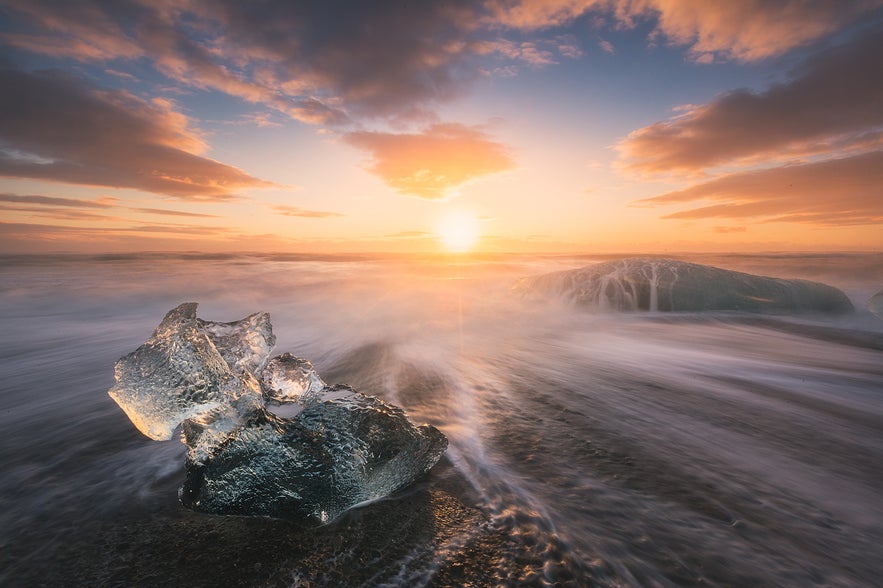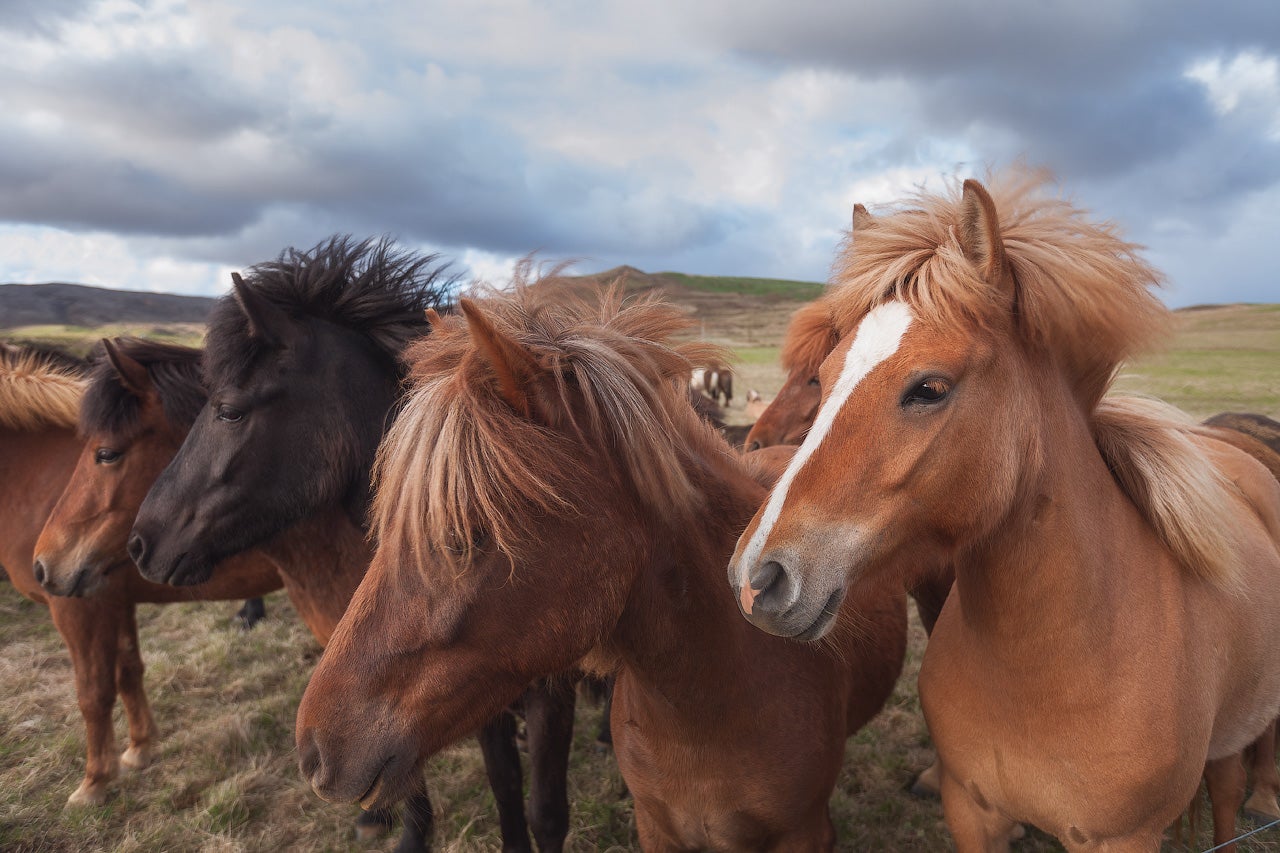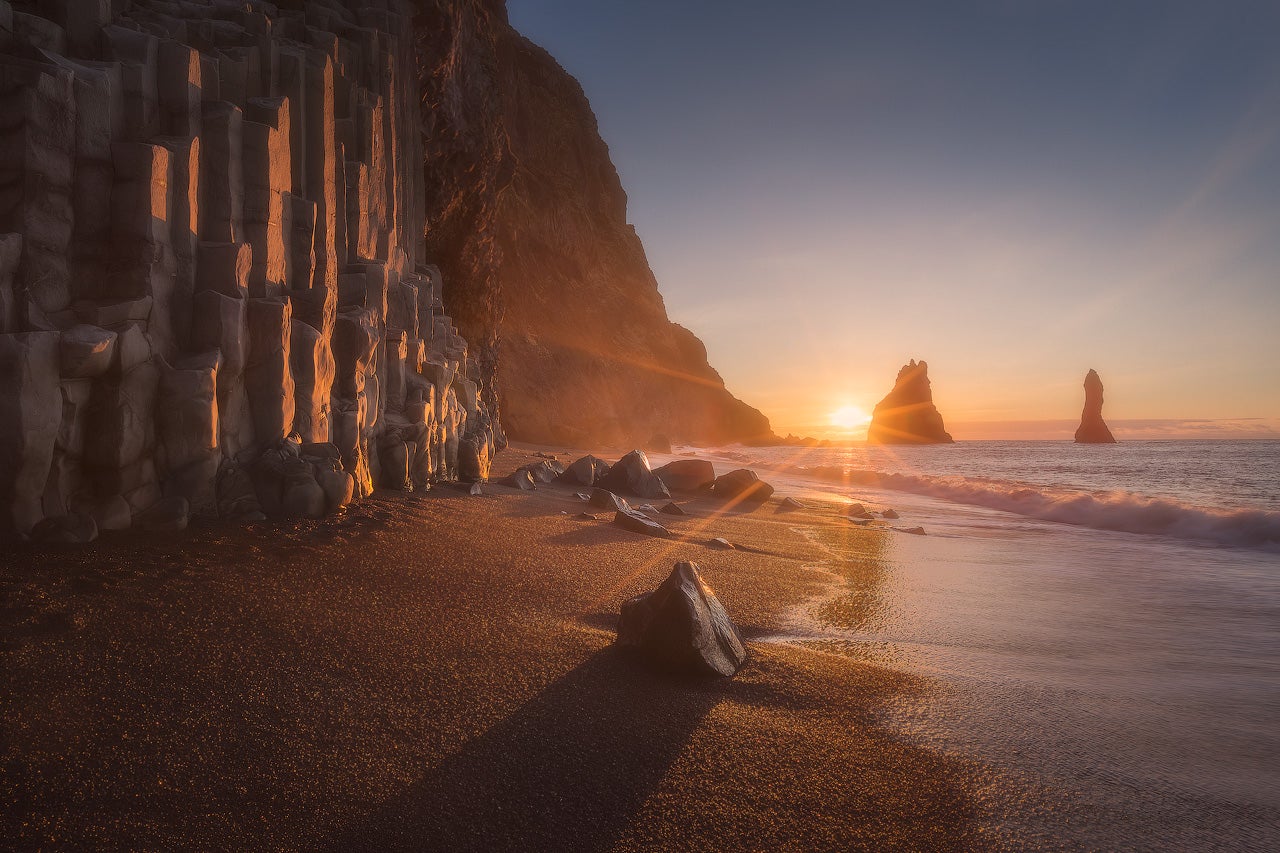
Let’s talk about exposure. It’s a concept that can be difficult to get your head around, particularly if you’ve already been confused by the numbers and jargon associated with photography! Basically, the idea behind exposure is easy – it relates to the amount of light that reaches your camera’s sensor in order to create an image. If you can master the ins and outs of this, then you will find yourself in complete creative control over what is illuminated in your photograph and what isn’t, giving you the power to convey mood in your photos with the simplicity of lighting.
- Discover The Exposure Triangle: Aperture, ISO & Shutter Speed Explained
- Here are 11 Tips to Help You Capture Stunning Landscape Photographs
- Learn all about Landscape & Nature Photography
In this beginner’s guide to exposure, we will make it easy for you to understand how to use your camera’s settings to properly expose a photograph of the landscape, allowing you to create truly amazing images that will effectively tell the story of your unique experience in Iceland.
The Exposure Triangle
There are three main things for you to know about exposure, which work together to provide enough light for your camera’s sensor to record an image. These are the aperture, shutter speed and ISO. When grouped together, we refer to these settings as the “exposure triangle”.
Aperture
Aperture refers to how wide you open up the diaphragm within your lens, which in turn affects how much light is allowed in to your camera’s sensor. The aperture is expressed as a series of “f stops”, ranging from large to small.
A large or open aperture such as f/1.4 will let in a lot of light to the sensor, whereas a smaller or closed aperture such as f/22 won’t let in very much light at all.
However, when you adjust your camera’s aperture, you aren’t just adjusting the amount of light that reaches your camera’s sensor. You are also selecting how much of the landscape will be in focus in your shot. An open aperture will mean that only a small area is in focus, whereas a closed aperture will mean that more of the landscape will be in focus from the foreground to the background of your photograph.
 A closed aperture will mean nearly everything is in focus. Photo by: 'Iurie Belegurschi'.
A closed aperture will mean nearly everything is in focus. Photo by: 'Iurie Belegurschi'.
Shutter Speed
The shutter is a mechanism within your camera that allows you to let light pass through the sensor for a certain period of time. When you press the shutter button on your camera, the shutter opens, light hits the sensor and then the shutter closes.
 Slower shutter speeds can create dreamy effects. Photo by: 'Iurie Belegurschi'.
Slower shutter speeds can create dreamy effects. Photo by: 'Iurie Belegurschi'.
When we talk about shutter speed, we are referring to how long you leave the shutter open for. This in turn affects how much light is allowed into your camera’s sensor.
The longer the time, the more light that is allowed in. A fast shutter speed like 1/1000th of a second will not let in very much light at all. On the other hand, a slow shutter speed like 2 seconds will let in a lot more light.
ISO
The ISO on your camera measures the sensitivity of your image sensor. The lower the ISO, the less sensitive it is to light. The higher the ISO, the more sensitive it is, meaning that your resulting image will be brighter.
As you increase the sensitivity of your image sensor, you may notice an accompanying increase in the level of noise and grain in your photographs. As such, it is always best to use the lowest ISO that you can when exposing your images.
 A higher ISO is required for darker environments. Photo by: 'Iurie Belegurschi'.
A higher ISO is required for darker environments. Photo by: 'Iurie Belegurschi'.
How Does the Exposure Triangle Work?
The combination of aperture, shutter speed and ISO in the exposure triangle produces an exposure value (EV) that indicates how much light reaches your camera’s sensor. It is important to have a balance of these three settings within the exposure triangle for a well exposed picture.
Changing the values of each parameter will in turn affect the stops of light that reach your camera’s sensor. This unlocks the potential for you to influence the resulting mood of your photographs to suit the story that you want to tell.
 You can create a moody scene with a darker exposure. Photo by: 'Edwin Martinez'.
You can create a moody scene with a darker exposure. Photo by: 'Edwin Martinez'.
If you don’t let in enough light to your sensor, then your image may be underexposed and dark. The opposite occurs when you let in too much light, with your image becoming overexposed, or bright. Having said that, there is no real ‘correct’ exposure to dial in to your camera. Whether your photo is bright or dark, if you are able to achieve the effect that you want to convey with your photograph, then the exposure is correct for you.
However, for the purpose of discussing exposure, let’s talk about a zero-centred light meter or exposure value (±0EV).
What is the Light Meter?
A light meter is a device that is used to measure the amount of light in a scene. It can be a standalone device, though these days, it is often built in to your camera. The light meter allows your camera to determine the correct combination of aperture, shutter speed and ISO that will result in a balanced exposure for your picture.
When the light meter is zero-centred at ±0EV, it means that the exposure triangle settings reflect an exposure that the light meter considers to be correct. When the light meter moves to the right (e.g. +1EV, +2EV, etc.), it means that you are overexposing the scene. On the other hand, when the light meter moves to the left (e.g. -1EV, -2EV, etc.), it means that you are underexposing the scene.
 A well-exposed shot of the Northern Lights. Photo by: 'Iurie Belegurschi'.
A well-exposed shot of the Northern Lights. Photo by: 'Iurie Belegurschi'.
How you choose to meter the light will depend on what you are trying to achieve creatively, in order to calculate the exposure that is most appropriate for the scene. There are generally four different metering modes available on your camera. These are matrix (evaluative) metering, centre-weighted average metering, spot metering and partial metering.
When you are spot metering, only a small portion of the image in the centre of the viewfinder or a selected focus point is used in the final calculation of exposure. This method is most useful for high-contrast scenes, where your subject is much darker or brighter than the rest of the frame.
Partial metering is similar to spot metering, but with a larger area involved.
With centre weighted metering, the camera uses a larger circular area in the centre of your viewfinder to measure the light intensity. This metering method is best used for photographing a subject with high contrast in relation to the background.
Evaluative or matrix metering takes into account the entire frame of your image when measuring light intensity and calculating the exposure. This method is most appropriate for scenes with very little contrast.
Exposure Modes
There are a number of different exposure modes on your camera – Automatic, Program, Av, Tv, Manual and Bulb – that tell your camera how to choose the settings within the exposure triangle in order to produce a well exposed scene.
When you set your camera to Automatic, it will determine the aperture, shutter speed and ISO settings for you in order to achieve a balanced exposure.
The Program mode is very similar, in that it determines the aperture and shutter speed but not the ISO.
 Aperture priority is like a good friend on a sunny day. Photo by: 'Iurie Belegurschi'.
Aperture priority is like a good friend on a sunny day. Photo by: 'Iurie Belegurschi'.
In landscape photography, the Aperture Priority (Av) mode is like a good friend on a sunny or well-lit day. It allows you to choose the aperture, while the camera helps you to achieve your desired exposure by automatically adjusting the shutter speed so that the light meter is centred at ±0EV. You can set your ISO manually if you want, or you can leave it up to the Av mode to select it for you. The brilliant thing about shooting in Av mode is that you can set a particular value for depth of field to control which parts of the landscape you want to be in focus, thereby helping you to tell the story behind the location that you are photographing.
On the other hand, Shutter Priority (Tv) mode allows you to choose the shutter speed, while the camera automatically selects an aperture that will result in a well-exposed photo. As with the Av mode, you can set your ISO manually, or leave it up to the camera to select it automatically for you. The Tv mode is most useful for freezing motion or action, such as when an object washes ashore.
 Diamonds washing ashore. Photo by: 'Iurie Belegurschi'.
Diamonds washing ashore. Photo by: 'Iurie Belegurschi'.
With Manual mode, you will have complete control over the entire exposure triangle. This mode is best used at night time, when the camera is unable to automatically help you with exposure because there is not enough light. While in Manual mode, you will be able to select the aperture, shutter speed and ISO yourself, in order to achieve a well-balanced exposure. The only limitation of this is that the Manual mode will only allow you to achieve an exposure of 30 seconds or less. If you would like a longer exposure time, then you will need to switch your exposure mode to Bulb, which will allow you to keep the shutter open for as long as you’d like.
 Manual mode is best for shooting the Northern Lights. Photo by: 'Iurie Belegurschi'.
Manual mode is best for shooting the Northern Lights. Photo by: 'Iurie Belegurschi'.
Steps to Follow to Achieve a Well-Balanced Exposure
Now that you’ve got an understanding of the exposure triangle, light metering and exposure modes, you can combine them to achieve the exposure that you want. However, keep in mind that each situation will require a different method in order to achieve a well-balanced exposure. For example, capturing a well-exposed photograph of the stars is very different to taking a well-exposed photograph of the landscape during the daytime.
Before you begin, make sure to analyse the lighting conditions and the limitations of the scene. Are there areas of dark shadows or bright highlights? This will assist you in choosing a light metering method and to set the parameters of your exposure triangle.
 Examine the scene for any shadows or bright highlights. Photo by: 'Iurie Belegurschi'.
Examine the scene for any shadows or bright highlights. Photo by: 'Iurie Belegurschi'.
Next, choose the exposure mode that suits the scene best. You will then be able to set the aperture, shutter speed and ISO so that the light meter is centred at ±0EV.
After that, take a picture and check the result on your LCD and histogram to see if it matches your creative vision. If your histogram is touching the right side, then it means you are losing data on some of the brighter tones, whereas if it is touching the left side, then you are losing information in the darker tones or shadows.
If either your highlights or shadows are touching the sides (we refer to this as “clipping”), then it means that you won’t be able to recover the information, meaning that your highlights or shadows will be too blown-out to retain any detail. When there is clipping, experiment with the shutter speed or ISO until your image is well-exposed.
 Choose the exposure mode that suits the scene best. Photo by: 'Iurie Belegurschi'.
Choose the exposure mode that suits the scene best. Photo by: 'Iurie Belegurschi'.
In some situations, you will be able to skip a few of these steps to achieve a well-balanced exposure. For example, when you are photographing at night time, you won’t have to meter the light. This means that you won’t need to worry about selecting a metering mode. All you’ll need to do is to set your camera to Manual and to select your exposure triangle values yourself to achieve your desired exposure.
The aim at night time is to capture the stars at the brightest possible exposure, so just remember to set the aperture as wide as it will go (f/2.8 or whatever your lens allows) in order to capture the maximum amount of light within the set shutter speed. To capture more stars, increase your ISO as much as you can without creating too much noise. Take a photo to test your settings and then check your histogram, adjusting the exposure triangle accordingly to achieve a well-exposed shot.
Now that you’ve got a basic understanding of exposure, you are well on your way to capturing amazing photos of the landscape in Iceland! It’s as easy as controlling the amount of light that reaches your camera’s sensor in order to create the image that you have in mind. By following this guide, you will be able to use the available light in a scene and to manipulate it in ways that will allow you to convey a sense of mood in your photos. Doing so will enhance the story of your unique experience in Iceland and improve your photography. With ongoing practice, you will learn how to gain complete creative control over your photographs in no time!
About the author: Serena Dzenis is a landscape photographer based in Iceland. You can find more of her work on her website or by following her on Facebook and Instagram.
Are you ready to unleash your photography skills in-field? Check out our 11-Day Northern Lights Photo Workshop Around Iceland!












